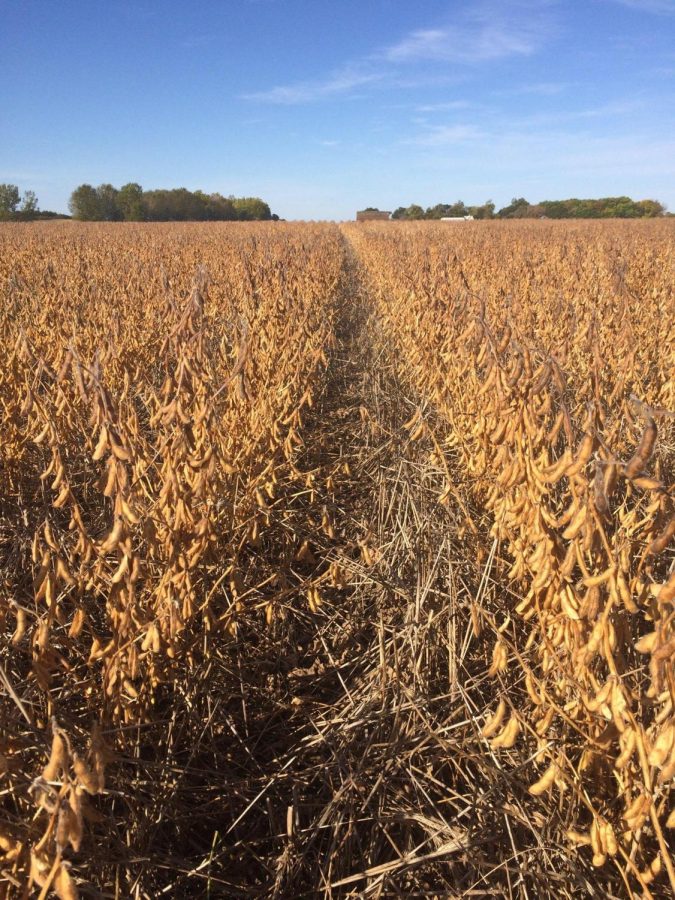Soil: a climate change hero?
High yielding, mature soybeans that were planted into a living cover crop of cereal rye. The cover crop resulted in a multitude of benefits including capturing carbon, erosion prevention, disease control and uptake of nutrients that would have otherwise been lost into ground and surface waters.
December 4, 2019
The world is getting hot. But what does soil have to do with it? Quite a lot, in fact. In the years to come, one of the most important jobs of soil will be to help us recapture the very thing making our world too warm: carbon.
Carbon is made of tiny atoms, yet it is one of the most important building blocks of life. It provides a sort of “backbone” for many of the materials that make up the environment around us — even our own bodies. Without carbon, there would be no trees, no grass, no humans and not much else. How can carbon, so necessary for life, be causing a disaster as big as global warming?
When carbon is stored as dead plant matter in safe places, like the soil or deep in the ground as coal or oil, carbon can’t trap heat in our air. Carbon becomes a problem only after it is transformed into a gas, carbon dioxide (CO2). Once in the air, CO2 molecules absorb energy given off by the sun, trapping this energy near the earth’s surface. You and I experience this newly trapped energy as heat.
We often hear about CO2 being released through burning gasoline in cars or coal in power plants. An underappreciated amount of CO2 in our air has been released from soil. In fact, most agricultural soils now store less than half of the carbon that native prairies did before we started farming.
How does farming release CO2 into the atmosphere? In a word, tillage. Tilling the soil exposes dead plants to bacteria, which rapidly decompose dead vegetation. Carbon held within dead plant tissues is released by bacteria into the air as CO2. Frequent tillage during each growing season results in much less carbon being captured by plants and “pumped” back into the soil. Under this scenario, there is much more carbon being lost than captured.
Less carbon in the soil harms farmers and rural communities in two important ways. First, more CO2 in the atmosphere will result in a warmer earth, causing severe disasters such as global food shortages and dangerous weather extremes. Second, less carbon in the soil makes for poor crop-growing conditions.
Soils with less carbon require considerably more fertilizer to grow healthy crops. Part of the reason why more fertilizer is applied to cropland now than at any other point in history is because soils have less carbon to hold onto nutrients. Loss of these nutrients is bad news for the farmers who pay for this costly input, but also dangerous for humans and other animals that can be harmed by drinking water possessing excess agricultural and residential fertilizer.
There is good news, however. New farming practices which result in more carbon being stored in soils do exist, and they are gaining popularity. Planting into the standing residue of previous crops would have once been a crazy idea, but thanks to improved farming equipment and research, this practice is commonly done without having to till cropland, saving farmers both time and money.






















